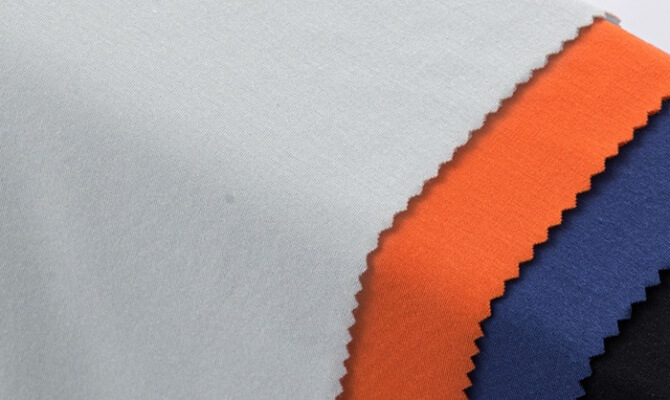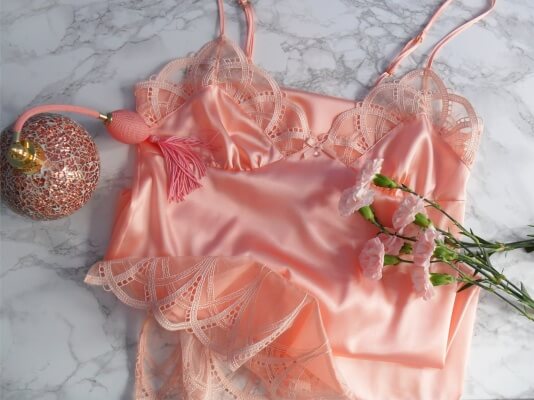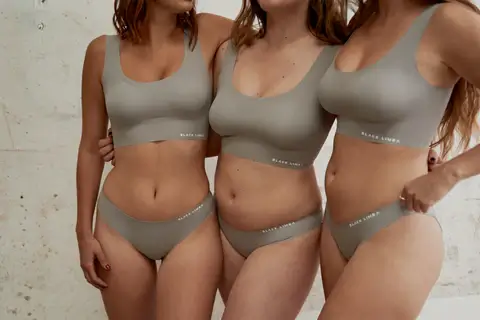Silk vs. Microfiber vs. Modal: A Manufacturer's Insider Guide to Lingerie Fabric Costs & Performance?
You're developing your next lingerie collection and face a critical decision: which fabric will you use? Choosing between the luxury of silk, the performance of microfiber, and the softness of modal can feel overwhelming, and the wrong choice can impact your costs, durability, and brand perception.
The choice between silk, microfiber, and modal is a trade-off between luxury, performance, and sustainable comfort. Silk offers unparalleled luxury at a high cost, microfiber delivers durable performance and value, while modal provides eco-friendly, super-soft comfort. The right choice depends entirely on your brand's target customer, price point, and desired garment performance.

As a manufacturer, the first question I always ask a brand is not "what do you want to make?" but "who are you making it for?" The answer to that question immediately points us toward the right fabric. A luxury bridal brand and a brand focused on everyday comfort will make very different choices. I've seen brands try to use cheap synthetic satin to imitate silk and fail, and others use expensive silk for a product that demanded the durability of microfiber. At HAVING (China) Ltd., our "body-before-fabric" philosophy means we start with the desired feeling and function, then select the perfect material. Let's break down the real-world pros and cons of these three incredible fabrics from a manufacturer's perspective.
The Icon: Is Silk the Ultimate Luxury, and Is It Worth the Cost?
When you think of luxury lingerie, you think of silk. Its history, natural sheen, and incredible feel are legendary. But in the practical world of manufacturing and budgets, is it always the right choice for a modern brand?
Silk is an undisputed luxury champion, offering a beautiful drape and a unique, temperature-regulating feel. However, its high cost, delicate nature, and demanding care requirements mean it's best reserved for premium, special-occasion pieces where perceived value and beauty are the primary goals.

Working with silk on the factory floor is like being a surgeon. It requires specialized, fine needles to avoid snagging, careful tension control, and highly skilled sewers. It’s not a fabric you can rush. I remember a high-end brand we worked with on a collection of silk chemises. The cost per meter was high, and the cutting process was slow to ensure every pattern piece was perfect. The final product was breathtakingly beautiful, and their customers paid a premium for it. But it's not a workhorse fabric. For a brand focused on everyday wear, the cost and fragility of silk can lead to customer complaints about durability. It's a specialist material for a specialist brand.
Silk: The Unvarnished Truth
- Performance & Feel: Silk is a natural protein fiber. It feels incredibly smooth and soft, drapes beautifully over the body, and is surprisingly breathable. It's also a natural insulator, feeling cool in the summer and warm in the winter. Its main weakness is its low elasticity and fragility when wet.
- Cost & Manufacturing: This is its biggest hurdle. Silk is one of the most expensive natural fibers. Its slippery nature makes it difficult and time-consuming to cut and sew, which increases labor costs. The defect rate during production is also typically higher than with synthetic fabrics.
- Best For: Luxury chemises, robes, high-end bridal lingerie, sleepwear, and premium gift items where the story of luxury is paramount. It’s less suitable for everyday bras and panties that require frequent washing and stretch.
The Workhorse: Is Microfiber the Smart Choice for Modern Performance?
You want a fabric that feels soft, holds its shape, is easy to care for, and comes in vibrant colors, all at an accessible price point. This is the world of microfiber, the unsung hero of the modern lingerie drawer.
Microfiber, a super-fine variant of polyester or nylon, is the workhorse of the lingerie industry. It offers a fantastic balance of softness, durability, moisture-wicking performance, and value. It is the ideal choice for everyday garments that need to be comfortable, functional, and long-lasting.

When clients come to us for performance-oriented products like seamless underwear or comfortable T-shirt bras, we almost always start with microfiber. Its fibers are thinner than a strand of silk, which gives it an incredibly soft, peach-skin-like feel. Unlike silk, it's strong, holds color brilliantly, and can be engineered to have excellent stretch and recovery. It’s the fabric that makes modern innovations like seamless knitting and bonded edges possible. While it may not have the "couture" story of silk, its combination of softness and functionality is what today's consumer often reaches for day after day. It’s a key material in our high-performance shapewear for exactly these reasons.
Microfiber: The High-Performance All-Rounder
- Performance & Feel: Extremely soft and smooth to the touch. It's highly durable, resistant to shrinking and wrinkling, and easy to care for. Its synthetic nature means it wicks moisture away from the skin, making it great for active or everyday wear.
- Cost & Manufacturing: Microfiber offers incredible value. The fabric cost is significantly lower than silk or high-grade modal. It is stable and easy to work with on the factory floor, allowing for efficient, high-speed production, which keeps labor costs down. It’s perfect for creating seamless and bonded garments.
- Best For: T-shirt bras, seamless panties, everyday underwear, shapewear, and activewear. It’s a versatile fabric that forms the backbone of most modern lingerie collections.
The New Comfort King: Is Modal the Perfect Eco-Friendly Hybrid?
Your brand values sustainability, but you don't want to sacrifice softness. You want something that feels as luxurious as a natural fiber but performs better. This is where modal, the super-soft, eco-friendlier fiber, enters the picture.
Modal, a type of rayon made from the pulp of beech trees, is a bio-based fiber renowned for its extreme softness and resistance to shrinking and pilling. It offers a "best of both worlds" scenario: the silky drape of a natural fiber with the easy-care performance of a modern one.

Modal has become incredibly popular with our clients who are building brands around comfort and sustainable stories. When you touch a high-quality modal jersey, the softness is immediately noticeable—some describe it as feeling like a "second skin." It has a beautiful, fluid drape like silk, but it's much more durable and can be machine washed. In production, it behaves well, and it blends beautifully with spandex to create fabrics with incredible stretch and softness. As part of our commitment to providing sustainable options, we often recommend TENCEL™ Modal, which is produced in an environmentally responsible closed-loop process. It’s the perfect fabric for brands that want to offer supreme comfort with a conscience.
Modal: Sustainable Softness, Modern Performance
- Performance & Feel: Exceptionally soft and smooth with a silky, luxurious feel. It is 50% more absorbent than cotton, making it feel breathable and cool against the skin. It resists pilling and holds color well, even after many washes.
- Cost & Manufacturing: The price of modal sits between microfiber and silk. It is more expensive than standard polyester or cotton but offers a significant upgrade in feel and performance. It is generally stable and easy to sew, making it efficient for production.
- Best For: Lounge lingerie, sleepwear, everyday panties, comfortable bralettes, and sustainable collections. It's for the brand whose primary selling point is unparalleled comfort.
The Final Verdict: A Head-to-Head Comparison
To make your decision easier, let's put them side-by-side.
| Feature | Silk | Microfiber | Modal |
|---|---|---|---|
| **Primary Selling Point** | Ultimate Luxury & Prestige | Performance & Value | Extreme Softness & Comfort |
| **Feel** | Unmistakably smooth, fluid | Peachy, soft, sleek | Exceptionally soft, silky, drapey |
| **Cost (Fabric & Labor)** | Very High | Low | Medium |
| **Durability** | Low (delicate) | Very High | High |
| **Care** | Hand wash or dry clean only | Machine washable | Machine washable |
| **Eco-Friendly?** | Natural, biodegradable fiber | Fossil-fuel based; can be made from recycled materials (rPET) | Bio-based, biodegradable; TENCEL™ Modal is highly sustainable |
| **Best For** | Luxury, Bridal, Gifting | Everyday, Seamless, Sporty | Lounge, Sleep, Comfort-Luxe |
Conclusion
The perfect fabric is the one that best tells your brand's story and serves your customer's needs. By understanding the true costs and performance of silk, microfiber, and modal, you can make a strategic choice.
Frequently Asked Questions (FAQ)
1. Is satin the same as silk?
No. This is a common point of confusion. Silk is a natural fiber, whereas satin is a type of weave. You can have silk satin (which is very expensive), but most satin products today are made from synthetic fibers like polyester to mimic the look of silk at a much lower cost. Polyester satin does not have the breathability or luxurious feel of real silk.
2. Which fabric is best for sensitive skin?
All three can be good for sensitive skin, but they have different properties. Silk and TENCEL™ Modal are very smooth natural-origin fibers and are often well-tolerated. OEKO-TEX® certified microfiber is also an excellent choice, as it's certified to be free of harmful substances and is very soft.
3. What is the best fabric for no-show panties?
Microfiber is the undisputed champion for no-show panties. It is used to create thin, sleek fabrics that can have laser-cut or bonded edges, eliminating bulky seams and creating a truly invisible look under clothing.
4. How does fabric choice affect the price a customer is willing to pay?
Fabric choice is a primary driver of perceived value. A garment marketed as "100% Mulberry Silk" can command a significantly higher retail price than an identical design made from polyester microfiber, due to the luxury and cost associated with the raw material. Similarly, a garment made with certified TENCEL™ Modal can appeal to eco-conscious consumers willing to pay more for sustainability.
